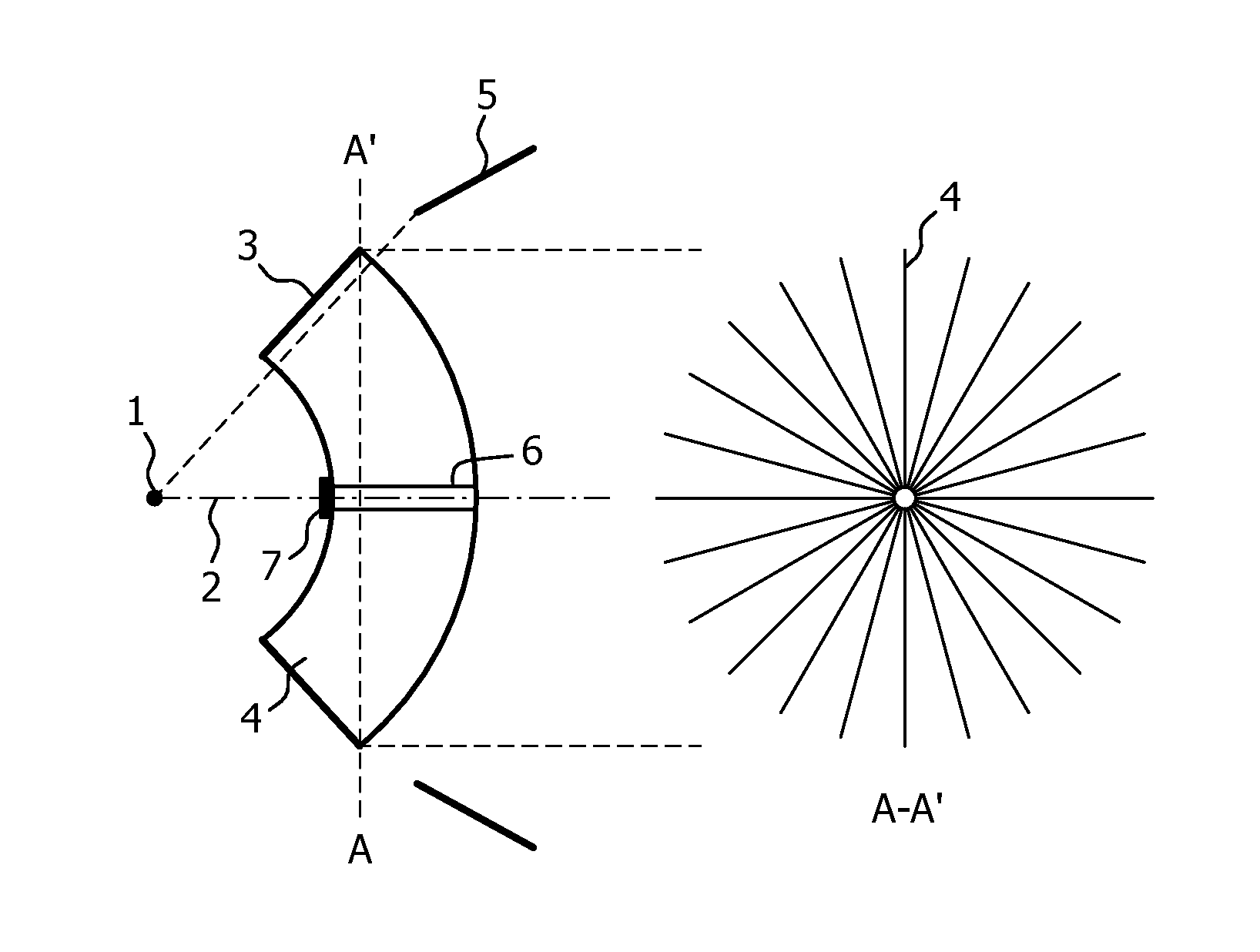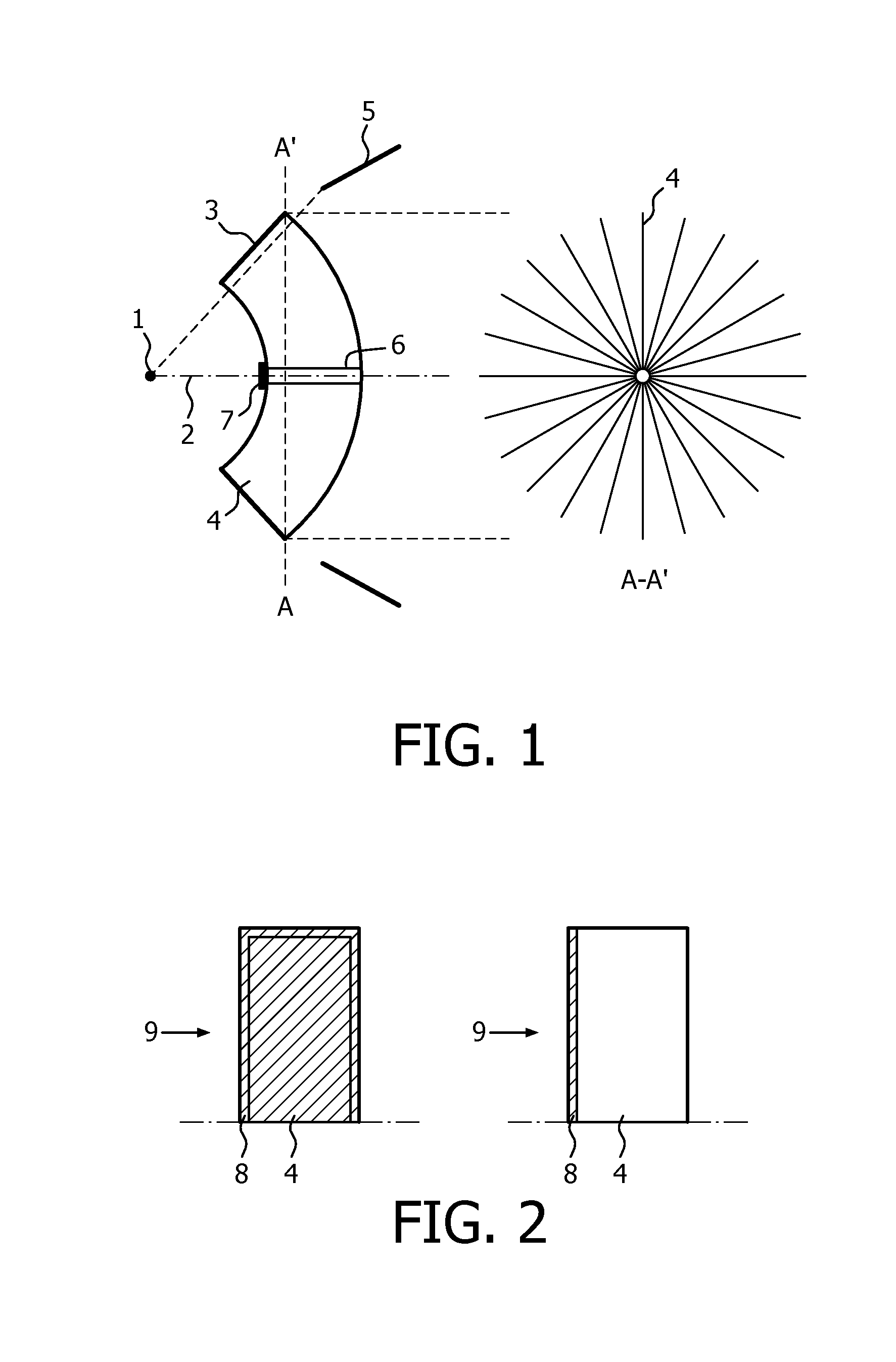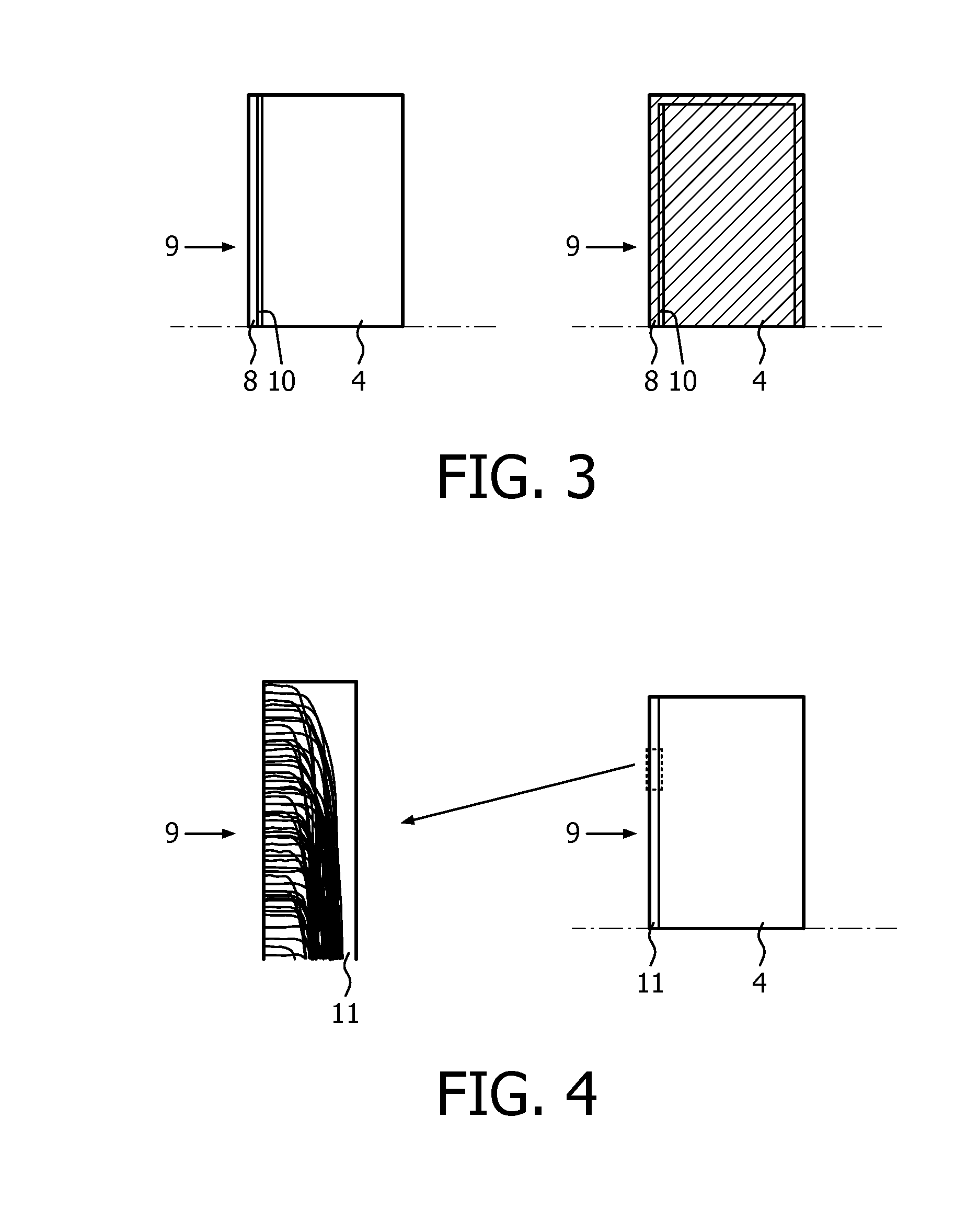Foil trap device with improved heat resistance
a trap device and heat resistance technology, applied in the field of trap devices, can solve the problems of affecting the properties of optical components, deteriorating performance, and ineffectiveness of optical components after a relatively short time, and achieve the effects of reducing thermal diffusivity, good adhesion of carbon materials, and high chemical stability
- Summary
- Abstract
- Description
- Claims
- Application Information
AI Technical Summary
Benefits of technology
Problems solved by technology
Method used
Image
Examples
Embodiment Construction
[0023]FIG. 1 shows an exemplary construction of a foil trap according to the present invention in a schematic side view on the left hand side and a front view on the right hand side. The foil trap has a rotating design in which the foils 4 radially extend from a rotation axis 6 to an outer ring 3 serving as a mounting fixture. The foil trap is arranged between the EUV plasma source 1 and an optical component 5 of the EUV system. The optical component 5 may be a collector mirror, for example, as known in the art. The rotation axis 6 of the foil trap is arranged on the optical axis 2 of the EUV system. A heat shield 7 protects the rotation axis 6. EUV radiation emitted from EUV plasma source 1 can pass the foil trap on a straight path between the single foils 4 of the foil trap extending between the entrance side and the exit of the foil trap. By rotating this foil trap around the rotation axis 6, debris particles are trapped by the foils 4 and cannot reach the optical component 5.
[00...
PUM
| Property | Measurement | Unit |
|---|---|---|
| thickness | aaaaa | aaaaa |
| thickness | aaaaa | aaaaa |
| thickness | aaaaa | aaaaa |
Abstract
Description
Claims
Application Information
 Login to View More
Login to View More - R&D
- Intellectual Property
- Life Sciences
- Materials
- Tech Scout
- Unparalleled Data Quality
- Higher Quality Content
- 60% Fewer Hallucinations
Browse by: Latest US Patents, China's latest patents, Technical Efficacy Thesaurus, Application Domain, Technology Topic, Popular Technical Reports.
© 2025 PatSnap. All rights reserved.Legal|Privacy policy|Modern Slavery Act Transparency Statement|Sitemap|About US| Contact US: help@patsnap.com



